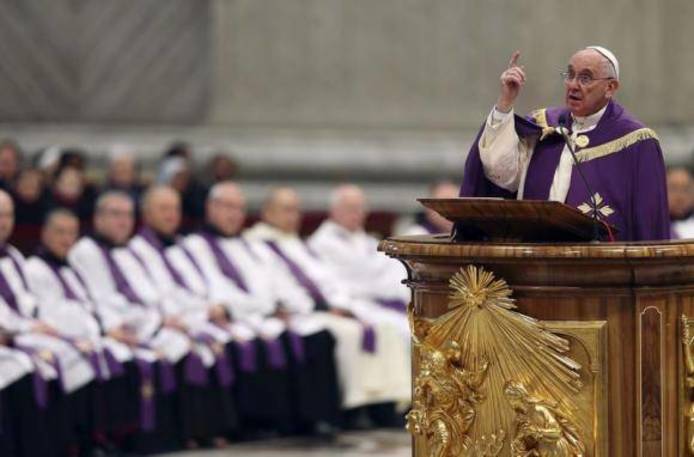


On Friday March 13, Pope Francis [2] announced in St. Peter’s Basilica, during a Lenten penitential service, the upcoming extraordinary Holy Year [3]. It will begin on December 8, 2015 and last until November 20, 2016. Prior to his announcement, the next Holy Year was scheduled for 2025 as Holy Years generally occur every 25 years. The focus of this Holy Year will be on the “mercy of God”, an important theme of his papacy. He explained this focus on Friday, “It shall be a Holy Year of Mercy. We want to live this Year in the light of the Lord’s words: ‘Be merciful, just as your Father is merciful.’” Francis says he wants Church members to be more merciful and less rigid towards sinners.
According to the Vatican [4]’s website, a Holy Year (also known as Jubilee) “is a year of forgiveness of sins and also the punishment due to sin, it is a year of reconciliation between adversaries, of conversion and receiving the Sacrament of Reconciliation, and consequently of solidarity, hope, justice, commitment to serve God with joy and in peace with our brothers and sisters.” An extraordinary Holy Year can be called to commemorate a significant event.
The announcement of this extraordinary Holy Year marks yet another reason why Pope Francis’ papacy has been so unique. Francis, former Buenos Aires Archbishop Jorge Mario Bergoglio, is the first non-European pope in more than 1,300 years. He is also the first Jesuit pope and chooses to live humbly in the Vatican guesthouse and travel with minimal security.
With 1.2 billion members of the Roman Catholic Church, this Holy Year is expected to bring millions of pilgrims to Rome. In 2000, during the last Holy Year, 25 million pilgrims flocked to Rome, which is a 25% increase in Rome’s usual annual visitors. Pope Boniface VII declared the first Holy Year in 1300. Since 1475, the Church has celebrated a Holy Year every 25 years, making this newly declared Holy Year only the 29th in the Church’s history. However, in 1983 Pope John Paul II [5] also called an extraordinary Holy Year, the occasion of which was to commemorate the 1,950 years after Jesus’ death.
During the Holy Year, the Holy Door, which is normally closed up, will be opened so pilgrims can pass through it into St. Peter’s Basilica. The same goes for the Holy Doors of other Roman basilicas (St. John Lateran, St. Paul Outside-the-Walls and St. Mary Major).
This Holy Year will mark a significant year for both the city of Rome and the Church. While Rome will experience an influx of faithful making their pilgrimages, the Church will celebrate a year dedicated to God’s mercy and rediscovering the need to be forgiving.
Source URL: http://newsite.iitaly.org/magazine/focus/facts-stories/article/pope-francis-announces-holy-year
Links
[1] http://newsite.iitaly.org/files/popefrancisstpeters1426619592jpeg
[2] http://w2.vatican.va/content/francesco/en/biography/documents/papa-francesco-biografia-bergoglio.html
[3] http://www.vatican.va/jubilee_2000/docs/documents/ju_documents_17-feb-1997_history_en.html
[4] http://w2.vatican.va/content/vatican/en.html
[5] http://www.vatican.va/special/canonizzazione-27042014/documents/biografia_gpii_canonizzazione_en.html